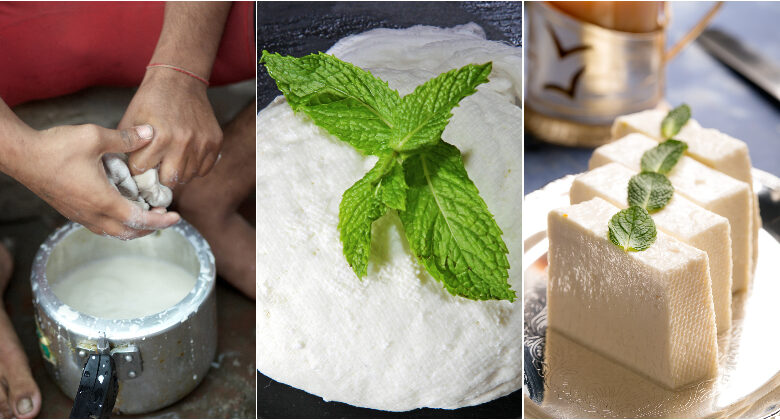Unveiling Fake Paneer: How to Detect Synthetic Variants
By employing these simple hacks, individuals can safeguard themselves against adulterated paneer and enjoy the nutritional benefits of this beloved culinary ingredient.

News Mania / Agnibeena Ghosh/ 26th April 2024
Paneer, a staple in Indian cuisine, is cherished for its versatility and nutritional value, often considered a protein-rich delight for vegetarians. However, the market has seen a surge in synthetic or fake paneer, undermining its quality and purity. Recent incidents, such as the seizure of substantial quantities of fake paneer along major highways and in factories, highlight the prevalence of this issue. To safeguard consumers from adulterated paneer, simple hacks can be employed to distinguish between genuine and synthetic varieties.
**Texture Check:**
Authentic paneer boasts a firm yet crumbly texture with a slight graininess. When pressed between fingers, it should maintain its shape while easily breaking apart. In contrast, fake paneer exhibits a rubbery or excessively smooth texture, deviating from its natural consistency. Unnaturally firm or overly compact paneer indicates synthetic production.
**Colour Examination:**
Genuine paneer typically displays a pale ivory or off-white colour, whereas fake variants may appear unnaturally white or possess a uniform hue throughout. Avoid paneer with an excessively bright appearance or lacking colour variation, as it may indicate the use of additives or bleaching agents. To conduct a test, boil a sample of paneer, allow it to cool, and add soybean powder. If the paneer turns slightly red, it suggests the presence of detergent or urea.
**Smell Test:**
The aroma of authentic paneer is mild and slightly milky, with a subtle sweetness. Strong and unpleasant odours in paneer are indicative of synthetic additives. Trust your olfactory senses and opt for paneer with a fresh and clean aroma.
**Taste Evaluation:**
Natural paneer exhibits a mild and creamy taste with a subtle tanginess from the curdling process. Conversely, synthetic paneer tends to taste excessively sour, with a chewy texture. When purchasing paneer, prioritize varieties that taste minimally processed and avoid those that seem artificial.
**Ingredient Analysis:**
Examine the ingredient list on the packaging when buying paneer from stores. Authentic paneer typically contains only milk and an acidic agent such as lemon juice or vinegar. Fake paneer, however, may include acetic acid, palm oil, and other additives, stabilizers, or preservatives. Choose paneer with minimal ingredients, avoiding synthetic additives whenever possible.
**Source Verification:**
Opt for paneer from trusted sources, such as local dairy farms or reputable brands committed to quality and authenticity. Homemade paneer is unmatched in freshness and purity. When purchasing from stores, look for certifications or labels indicating adherence to quality standards.
In conclusion, the proliferation of synthetic paneer underscores the importance of vigilant consumer awareness. By employing these simple hacks, individuals can safeguard themselves against adulterated paneer and enjoy the nutritional benefits of this beloved culinary ingredient.






